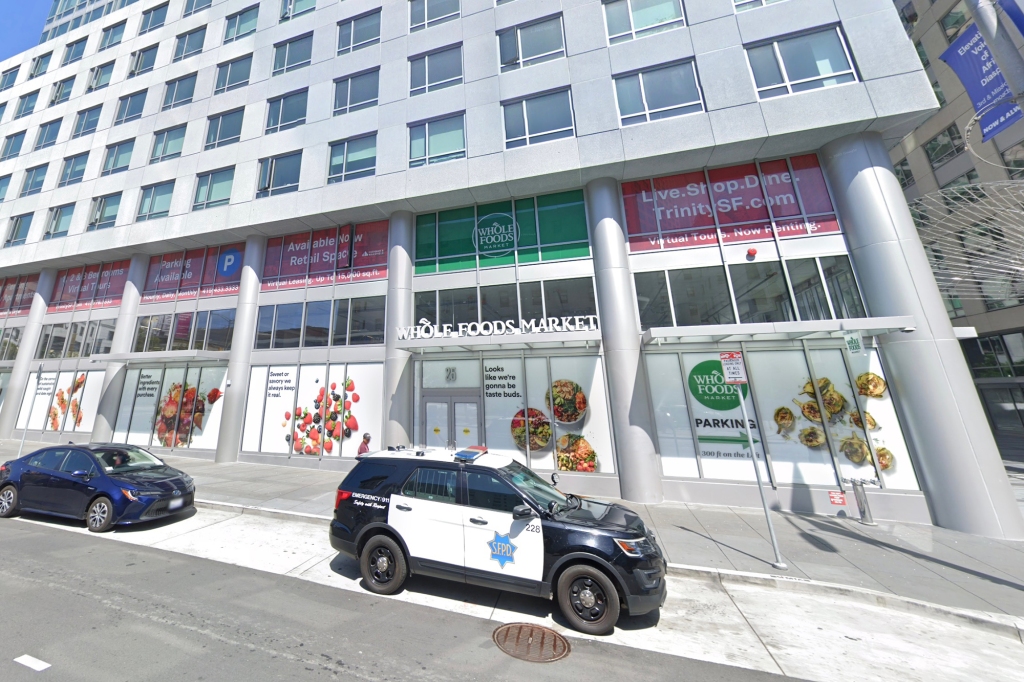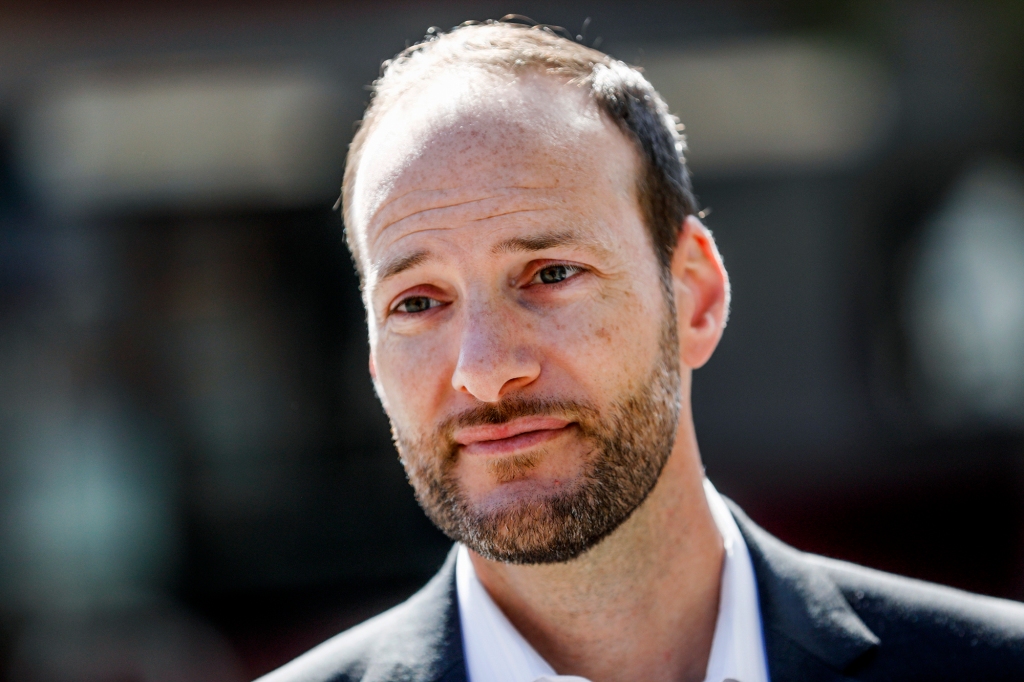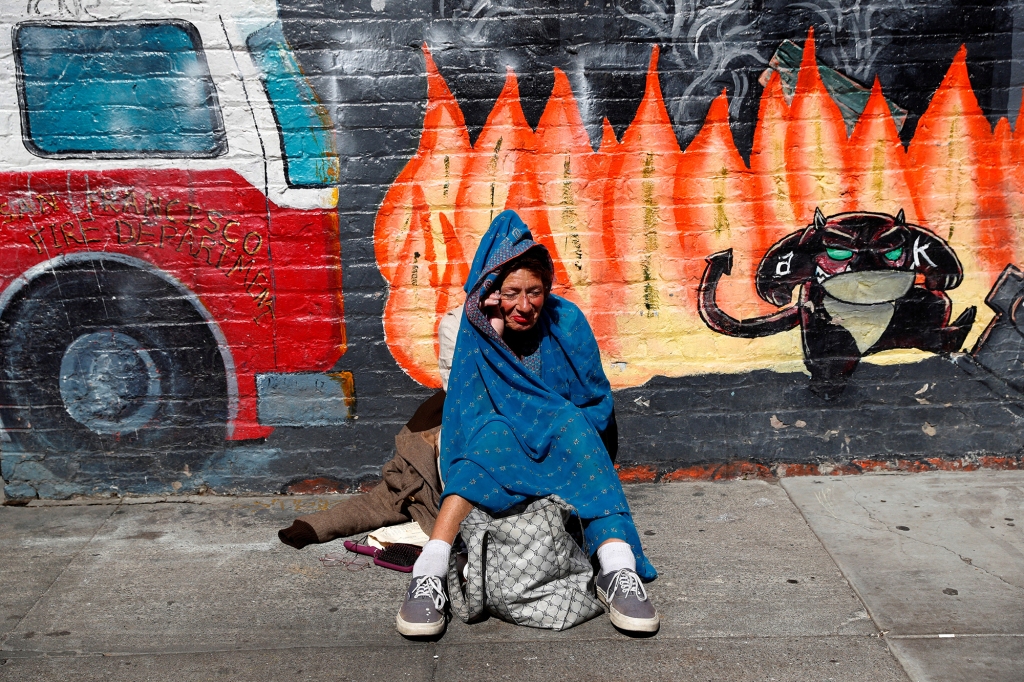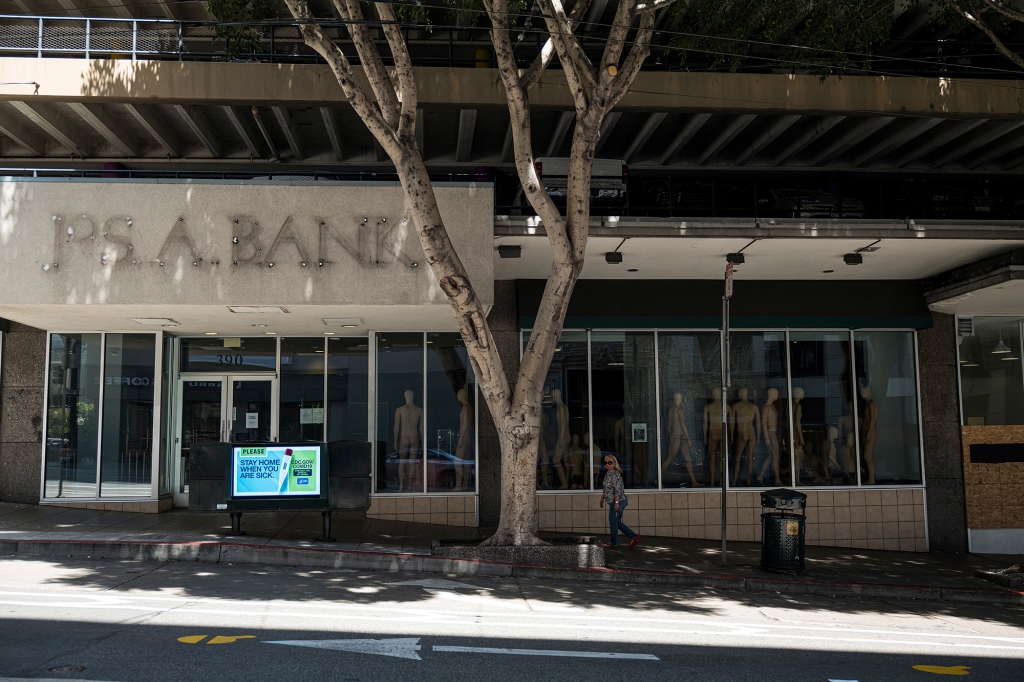How ‘woke’ policies turned San Francisco into an urban drug-den
Earlier this month, old-fashioned Xeroxed copies of a newspaper article appeared across the Mid-Market neighborhood in Downtown San Francisco. The article, from the San Francisco Chronicle, featured the headline: “S.F. D.A. Brooke Jenkins says she’ll consider murder charges for fentanyl dealers.” The article was taped to walls on neighborhood corners regularly frequented by drug dealers. At least one of those Xerox copies had the headline translated into Spanish — all the better for the dealers in question, most of whom are Honduran nationals, to get the message.
The photocopies were distributed by Matt Dorsey, Supervisor for the district that includes the Mid-Market area, which is adjacent to the Tenderloin (in San Francisco, which is both a county and a city, Supervisors are the equivalent of City Council members in other cities). Dorsey’s office had organized a neighborhood clean-up and the Supervisor had handed the article for volunteers to promote. Dorsey is himself a recovering addict and prior to becoming Supervisor, he was the Communications Director for the San Francisco Police Department. Ridding the neighborhood of drug dealers is his number one priority — a goal he shares with new District Attorney Jenkins.
Strange as it might sound to most non-San Franciscans, the kind of overt political opposition to open drug dealing that Dorsey and Jenkins represent is a challenge to the city’s political establishment. San Francisco is governed by a leadership that is so enamored of the city’s progressive, humanitarian self-image that the idea of enforcing basic laws — even ones that save people’s lives like controlling drug sales and consumption — has come to be regarded as reactionary. But conditions in the city have gotten so bad that San Francisco’s voters have begun to revolt. Living in a city whose downtown doubles as an outdoor drug den is becoming intolerable even for many notoriously tolerant San Franciscans.
“Open drug use has been normalized to the point there are blocks where the entire sidewalk is filled with people passed out or getting high,” said Kevin Lee, a San Francisco resident who is in recovery himself. “There is not enough emphasis on creating access to treatment.”


In the meantime, the city’s drug-induced mayhem continues unabated. A block from where the Xeroxed articles went up, for instance, is a brand new Whole Foods Market that opened in March of this year. The store, which is directly across the street from a city-supervised drug consumption site, is a monument to the distant, pre-pandemic aspirations of a once-booming San Francisco. Located underground, beneath a colossal tower of luxury apartments for tech workers, the 65,000 square foot market was expected to ride the coattails of the city’s exploding knowledge economy.
Instead, like the rest of the neighborhood, the Whole Foods has become a hotbed of petty crime. According to interviews with workers there, restrooms now include disposal containers for syringes because addicts from the open air drug market that surrounds the building use the toilet stalls as shooting galleries. Those addicts treat the store’s shelves as a veritable ATM, brazenly shoplifting merchandise in clear view of both Whole Foods employees and police officers working overtime shifts on the store’s floor.
Once, a security guard tried to stop an addict from stealing and was thrown through plate glass near the cheese counter. Another security guard who came to his assistance was strangled. Management started keeping frequently stolen products in the rear stockroom; they’re brought out to customers at the registers upon purchase. Undeterred, addicts simply began walking into the employees-only section of the store and rifling through coolers and boxes for coveted merchandise.

The once ubiquitous tech workers that were expected to patronize the store are hardly seen in Mid-Market anymore. When companies began shifting to work-from-home, downtown San Francisco’s office buildings emptied out. By 2024, one study estimates that Mid-Market commercial real estate will have a vacancy rate of 43 percent (compared to barely 6 percent citywide before the pandemic). Prior to the pandemic, tech workers on hoverboards coexisted, awkwardly, with homeless people smoking meth on the sidewalk. Now the “normal” people are mostly gone. The streets are almost entirely dominated by the dealers and users of the open air drug market.
Nor is the chaos contained to the Tenderloin and Mid-Market areas. The merchandise stolen from Whole Foods, like that stolen from Safeway, Target, CVS, Walgreens, and every other big box store in downtown San Francisco, is sold to fences on the sidewalks of the nearby Mission District, which brings the organized larceny industry to that mostly residential neighborhood, as well. Addicts attracted to San Francisco by the Tenderloin’s notoriety live in tent encampments scattered all over the city. In addition to shoplifting, addicts support their habits by breaking into cars and occasionally invading homes. The effects of the open air drug market thus ripple through every nook and cranny of San Francisco.

San Francisco is a famously tolerant city, but beneath this low-level mayhem, the city’s residents, who pay some of the highest taxes in the world, have been seething at their political leaders — often privately, and, increasingly, publicly. The public’s exasperation with the political establishment erupted twice already: first with the recall of the city’s comedically woke school board members in February, followed by the recall of former D.A. Chesa Boudin four months later.
Having been appointed in the wake of Boudin’s demise, new DA Jenkins is currently running to be formally elected to her office next month. Boudin was a career public defense attorney who essentially turned the prosecutor’s HQ into a second public defender’s office. He made a point of avoiding felony prosecutions for drug dealers, painting them as victims of human trafficking. On Boudin’s watch, dealers became more brazen than ever, barely bothering to conceal their transactions, while fatal drug overdoses surged in the city, claiming more than twice as many lives over the course of the pandemic as Covid. Meanwhile, Boudin’s office secured just three convictions for drug dealing in the entire year of 2021, and zero for peddling fentanyl. All while some Honduran dealers are making upwards of $1,000 per day, according to reports from former and current Assistant District Attorneys.

Nevertheless, most of the city’s political establishment (with the waffling exception of the Mayor) stood firmly behind Boudin. Only one of the 11 Supervisors supported the former D.A.’s recall. The San Francisco Democratic County Central Committee opposed the recall and recently endorsed Jenkins’ opponent — a candidate who is, if anything, even more radical than Boudin — in next month’s election.
“Much of San Francisco’s political establishment along with the city’s Democratic Party has become estranged from the city’s heavily Democratic voters,” said Randy Shaw, head of the Tenderloin Housing Clinic, which provides housing to indigent San Franciscans. “Voters rejected the Party-backed Boudin in a landslide, yet the Party has gone on to endorse a Boudin-backer against an appointed DA who campaigned for the recall.”

This has put Jenkins in the strange and politically envious position of being able to run against San Francisco’s political machine, even though she’s the hand-picked appointee of the Mayor. Thanks to an ideologically intoxicated progressive political establishment increasingly out-of-step with San Francisco’s voters, in next month’s election, Jenkins is at once an insider and an outsider. She can have her cake and eat it, too.
San Francisco’s politics are in the early stages of a realignment. But that doesn’t mean things will change overnight. The city’s challenges going forward are even worse than those behind it. Among the 62 largest cities in America, San Francisco already ranks dead last in the post-pandemic recovery of its downtown. That problem is only going to worsen as commercial real estate contracts that were signed at the height of the tech boom expire and fail to be renewed because employees are now working from home.

Meanwhile, the city’s open-air drug problems are likely to become even more dire as a trio of new “supervised” drugs sites are soon to debut; never mind that their infamous predecessor was a spectacular (and illegal) public failure. Downtown will thus continue to be a ghost town, thanks to city leaders whose policies embolden drug dealers and users with little or no consequence.
“My son is stuck with politicians who just hand addicts free drug paraphernalia and double down on the same failed policies,” said Jacqui Berlinn, who has tried for years to save her son, who is a homeless addict in the Tenderloin. “We finally have a new DA who wants to bring real change but she can’t do it until the rest of the city’s political leaders start working toward a real solution instead of making the crisis worse.”
As mounting office vacancies begin to chisel away at the tax base of a city whose social service needs are ballooning with the worsening addiction crisis, we might soon see city agencies warring over limited resources, exacerbating the political split between progressives and pragmatists.
The present dysfunction of San Francisco may thus be just a harbinger of a full blown crisis to come. Then again, given what passes for governance in San Francisco during normal times, perhaps a crisis is just what the city needs to bring it back from the edge of the abyss.
Read the full article Here


